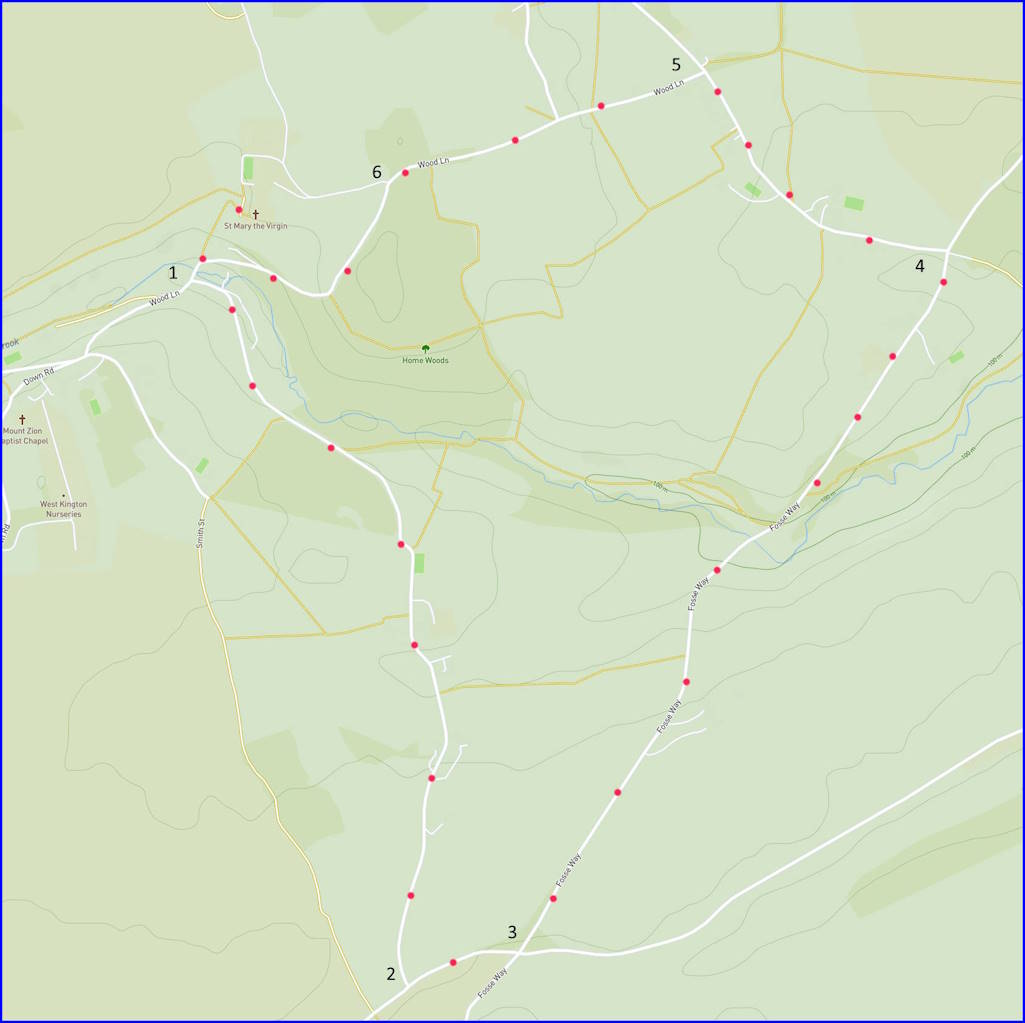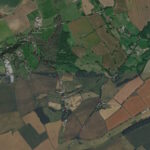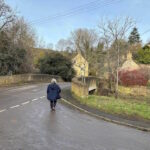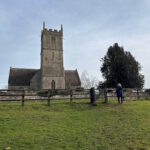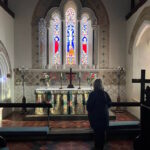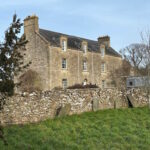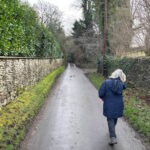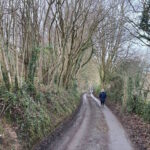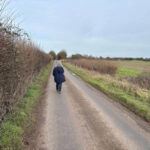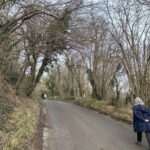A 4-mile undulating route on quiet lanes (no stiles) starting at or near the church. Click map to enlarge. Click here for an aerial view. Click here for a downloadable PDF guide of this page. (There is a GPX route option here for phone/tablet download. But only follow this link after watching this GPX help video). Friendly warning: all files relating to walks are published here on good faith but on the understanding that users must be responsible for their own safety and wellbeing.
(Routes from map points + metres to next point)
Start: From the church take footbath and bridge to junction 200m
1: Follow narrow lane 1.7Km
2: Turn left walk short distance 250m
3: Take left onto Fosse Way 1.7Km
4: Take first left turn 670m
5: Left turn in Nettleton 690m
6: Path to church or back to bridge
The pictures below are in the order things were seen on this walk. Clicking on any one will enlarge it (and the slideshow)
The walk
It is suggested that you start at the church, cross the river bridge and turn left to head towards the Fosse way. There is not a lot of space for parking a car. If you cannot park by the village notice board try driving back towards the church and you may find a verge near the farm buildings. This is an easy walk that is entirely on quiet country roads some of which descend into rough tracks in places. There are few vehicles – if you do meet some it is most likely on the stretch of the Fosse way, although cars seem to be local traffic to the houses around Nettleton. There is extensive dry-stone walling on the first part of the walk.
Hugh Latimer
West Kington’s modest fame arises from the rector of its church during the period 1931-35: Hugh Latimer. The church as you find it today is largely Victorian. All except the 13th century tower and the south doorway. Although it appears that the pulpit is of the 16th century period and it is of special interest because it is likely that Hugh Latimer preached from it.
Latimer was of humble Leicestershire stock but not so humble that he didn’t find a place at Cambridge. At first he was a traditional catholic but later became increasingly protestant. He was known for his vigorous sermons. These attracted the approving attention Henry VIII for that reason and becoming part of Thomas Cromwell’s circle. What moved him from West Kington was the King making him bishop of Worcester (1535-39.
While at West Kington he probably lived at the rather charming Latimer House (which, unfortunately, is just off the edge of this walk). His protestant fervour probably matured at the time he was rector at this village and although much is made of his presence locally it is likely that he did most of his thumping sermons in Bristol – and other areas that would attract large crowds (which they did).
He mainly preached against Rome although was particularly sceptical about the worth of most priests of his time. One of his best known sermons (sermon of the plough) likens a good priest to a working ploughman
For preaching of the gospel is one of God’s plough-works,
and the preacher is one of God’s ploughmen”
Unfortunately, his kind of views were not so popular with the later, and catholic, Queen Mary. So much so that she had him arrested along with Bishop of London Nicholas Ridley and Thomas Cranmer, Archbishop of Canterbury. They were imprisoned in 1554, found guilty of treason and burnt at the stake just outside Balliol College Oxford. Latimer is said to have spoken famous last words to Ridley:
“Be of good comfort, Master Ridley, and play the man; we shall this day light such a candle by God’s grace in England, as I trust shall never be put out.”
He was probably right. After all, you are reading about him and his views now, 500 years later.
Fosse Way
You will probably know that the Fosse Way was a Roman road that ran from Lincoln to Exeter. It was the western fronter of early Roman Britain – before expanding further west. The section you walk on near West Kington was probably used heavily for troop movements and transport of goods. Indeed, Roman settlements have been discovered along this stretch
Finally
West Kington was the site for filming a music video: ‘The Safety Dance’, an odd little number by Canadian band ‘Men Without Hats’ (1982). The lead singer wrote it after being ejected from a bar for pogo dancing (sort of reproduced in the video). He says the song was a protest against bouncers who would do such a thing to a pogodancer. The Morris Dancers you see were the Chippenham Town Morris Men. The woman is Louise Court who went on to become Editor-in-Chief of Cosmopolitan. It all must have some sort of cult status, not just because I know these trivial facts, but because people actually make videos about the video.

